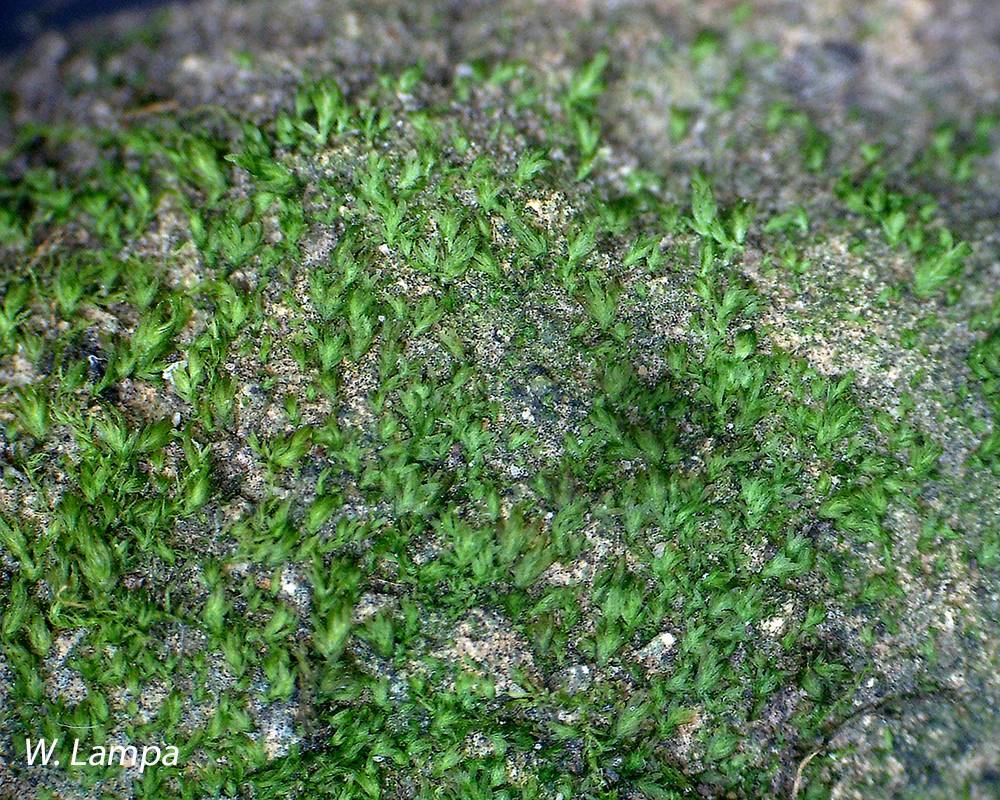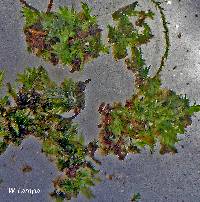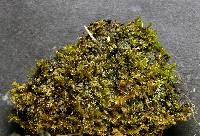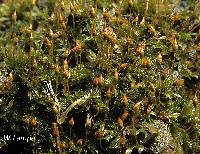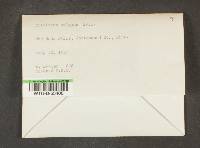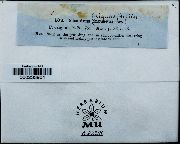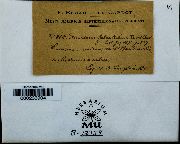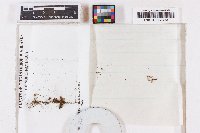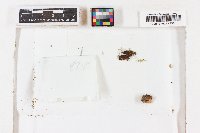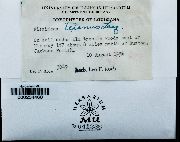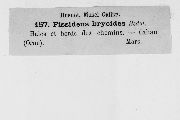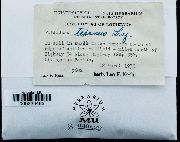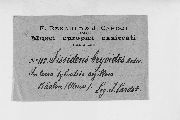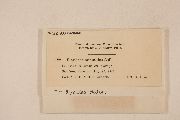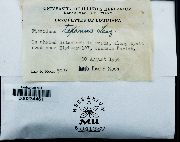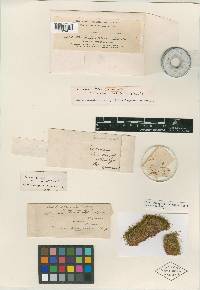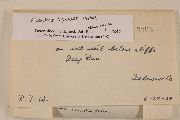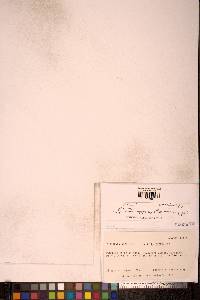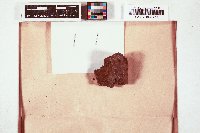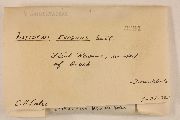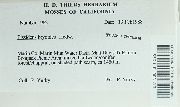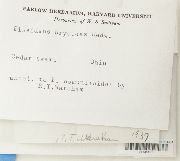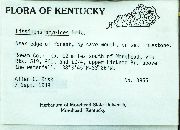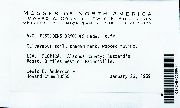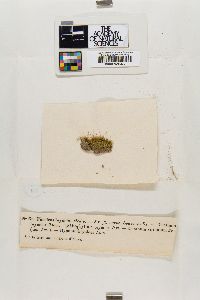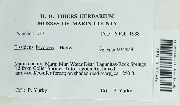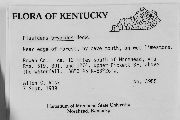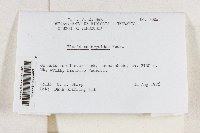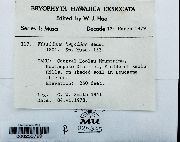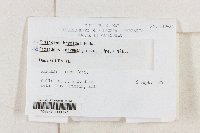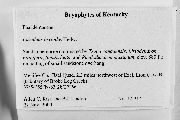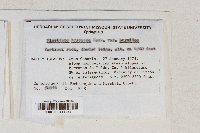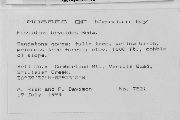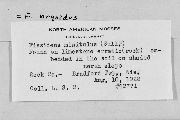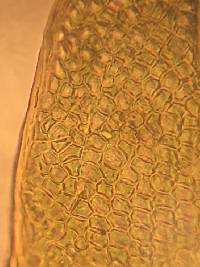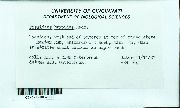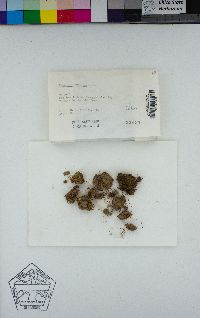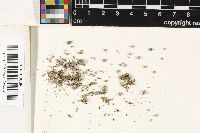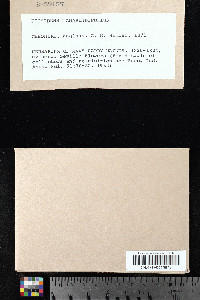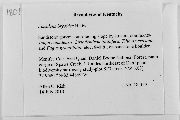
Consortium of Bryophyte Herbaria
- building a Consortium of Bryophytes and Lichens as keystones of cryptobiotic communities -
|
|
|
|
Family: Fissidentaceae
bryoid fissidens moss
[Dicranodon bryoides (Hedw.) Béhéré, moreDicranum bryoides Sw., Fissidens alpestris (Lindb.) J.J. Amann, Fissidens andersonii Grout, Fissidens angustilimbatus Broth., Fissidens borealis C. Gao, Fissidens bryoides subsp. alpestris (Lindb.) Limpr., Fissidens bryoides subsp. curnovii (Mitt.) Dixon, Fissidens bryoides subsp. inconstans (Schimp.) P. de la Varde, Fissidens bryoides var. alpestris (Lindb.) Waldh., Fissidens bryoides var. bryoides , Fissidens bryoides var. curnovii (Mitt.) J.J. Amann, Fissidens bryoides var. decumbens (R. Ruthe) Podp., Fissidens bryoides var. esquirolii (Thér.) Z. Iwats. & Tad. Suzuki, Fissidens bryoides var. exiguus Wahlenb., Fissidens bryoides var. inconstans (Schimp.) R. Ruthe, Fissidens bryoides var. lateralis (Broth.) Z. Iwats. & Tad. Suzuki, Fissidens bryoides var. longifolius (Brid.) Hampe, Fissidens caespitosus (Mitt.) Dixon, Fissidens curnovii Mitt., Fissidens decumbens R. Ruthe, Fissidens esquirolii Thér., Fissidens exiguus Hedw., Fissidens exiguus subsp. exiguus , Fissidens exiguus var. falcatulus (Ren. & Card.) Grout, Fissidens falcatulus Ren. & Card., Fissidens glossobryoides (Müll. Hal.) R.S. Chopra & S.S. Kumar, Fissidens gracilis (Bach. Pyl.) Brid., Fissidens hawaiicus E.B. Bartram, Fissidens holomitrium Spruce, Fissidens inconstans Schimp., Fissidens incurvus subsp. texanus (Lesq. & James) Kindb., Fissidens incurvus var. exiguus (Sull.) Austin, Fissidens incurvus var. inconstans (Schimp.) Husn., Fissidens incurvus var. synoicus (Sull.) Austin, Fissidens intralimbatus R. Ruthe, Fissidens jap-amabilis Sakurai, Fissidens lateralioides S. Okamura, Fissidens lateralis Broth., Fissidens longifolius Brid., Fissidens loscosianus Jur., Fissidens ludovicae Broth. & Paris, Fissidens oahuensis E.B. Bartram, Fissidens perexiguus Müll. Hal., Fissidens remotissimus Thér., Fissidens ryukyuensis E.B. Bartram, Fissidens shinii Sakurai, Fissidens sinensibryoides Müll. Hal., Fissidens synoicus Sull., Fissidens taiwanensis Herzog & Nog., Fissidens texanus Lesq. & James, Fissidens viridulus var. bryoides (Hedw.) Röhl., Fissidens viridulus var. intralimbatus (R. Ruthe) Düll, Fissidens viridulus var. texanus (Lesq. & James) Grout, Fissidens yamamotoi (Thér.) Z. Iwats. & Tad. Suzuki, Fissidens yasudae (Broth.) Z. Iwats. & Tad. Suzuki, Fissidens yokohamensis Thér., Heterodon bryoides (Hedw.) Raf., Hypnum bryoides (Hedw.) L. ex Funck, Schistophyllum bryoides (Hedw.) Lindb., Schistophyllum bryoides subsp. alpestre Lindb., Schistophyllum gracile (Bach. Pyl.) Brid., Skitophyllum bryoides (Hedw.) Bach. Pyl., Skitophyllum gracile Bach. Pyl., Skitophyllum longifolium (Brid.) Hampe] |
Plants: 3–11 × 0.9–3.2 mm. Stem: unbranched and branched; axillary hyaline nodules absent; central strand usually present. Leaves: as many as 20 pairs, lanceolate to oblong-lanceolate or oblong-lingulate, acute to short-acuminate or obtuse-apiculate, to 0.8–2.7 × 0.2–0.5 mm; dorsal lamina narrowed proximally, ending at or before insertion, infrequently slightly decurrent; vaginant laminae 1/2 leaf length, mostly equal; margin entire but often serrulate distally, limbate on all laminae, limbidium reaching apex or ending a few cells before or partially absent to infrequently completely absent, limbidial cells 1–3-stratose; costa excurrent to ending as many as 6 cells before apex, bryoides-type; laminal cells 1-stratose, distinct, smooth, often slightly bulging, firm-walled, irregularly hexagonal, a few elongate, 6.5–16 µm, somewhat larger in proximal parts of vaginant laminae. Sexual: condition polyoicous; naked antheridia and archegonia often in axils of distal leaves. Sporophytes: 1–2 per perichaetium. Seta: 1.4–10 mm. Capsule: theca exserted, erect, radially symmetric to ± inclined, bilaterally symmetic, 0.2–1.2 mm; peristome bryoides-type; operculum 0.5 mm. Calyptra: cucullate smooth, to 0.5 mm. Spores: 10–20 µm. Soil in moist, shaded sites, stones and rocks (both acidic and basic) in shaded areas, along streams, sometimes inundated, infrequently around bases of trees. Greenland, Alta., B.C., N.B., Nfld. and Labr. (Nfld.), N.W.T., N.S., Nunavut, Ont., P.E.I., Que., Yukon, Ala., Alaska, Ariz., Ark., Calif., Colo., Conn., Del., Fla., Ga., Idaho, Ill., Ind., Iowa, Kans., Ky., La., Maine, Md., Mass., Mich., Minn., Miss., Mo., Mont., N.H., N.J., N.Mex., N.Y., N.C., N.Dak., Ohio, Okla., Oreg., Pa., R.I., S.C., S.D., Tenn., Tex., Utah, Vt., Va., Wash., W.Va., Wis., Wyo., Mexico, West Indies, Central America, South America, Europe, Asia. Fissidens bryoides is a veritable kaleidoscope of intergrading expressions. At one extreme is F. bryoides in the strict sense, with plants gonioautoicous and the limbidium, 1–3 cells thick, confluent at the leaf apex with the percurrent to short-excurrent costa. At the other extreme is the expression that has been singled out as F. exiguus, with plants rhizautoicous and the 1-stratose limbidium usually restricted to the vaginant laminae of perichaetial leaves. In rare cases the limbidium can be absent from all leaves. All expressions, however, have clear, distinct, 1-stratose, irregularly hexagonal laminal cells, 6.5–16 µm, that in transverse section are no deeper than wide, and that have smooth walls that can be slightly bulging. H. A. Crum and L. E. Anderson (1981) illustrated the major expressions found in the flora area. Axillary, multicellular gemmae have been reported in Indian specimens. |
|
|
|
Powered by Symbiota.

